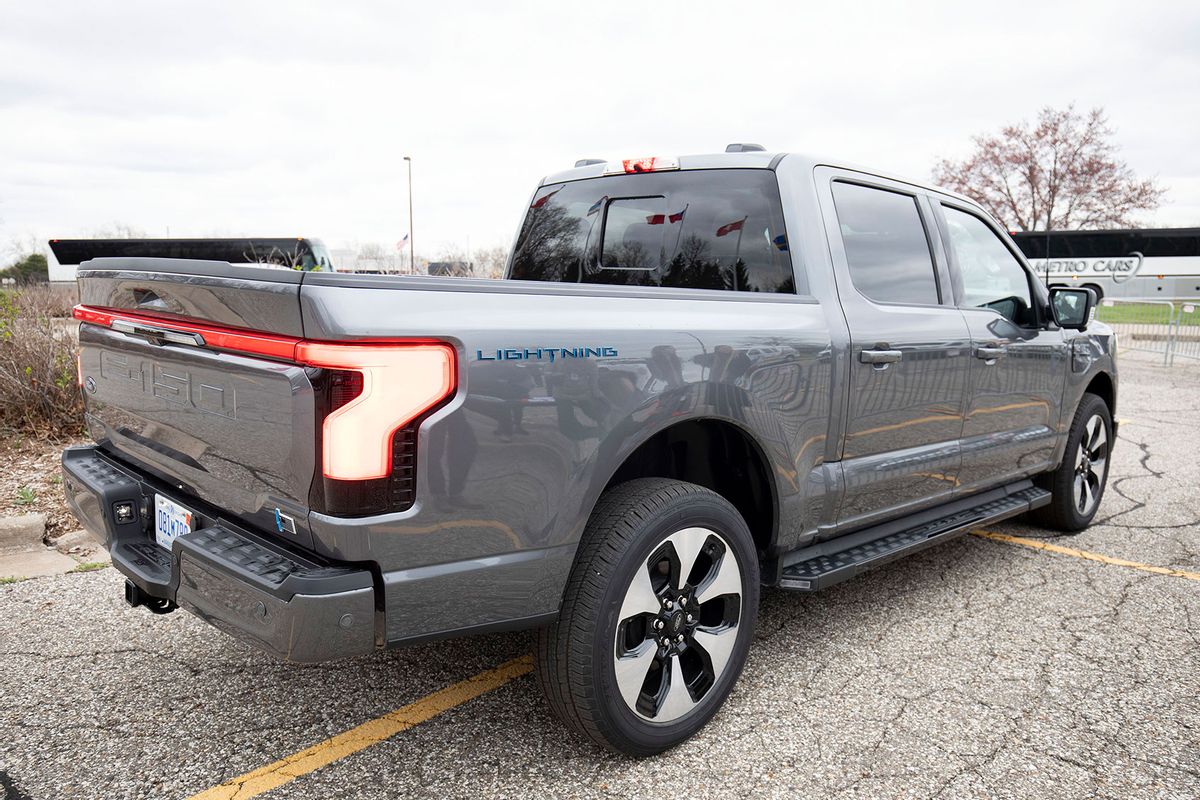California’s ban on gas-powered vehicles: Huge victory in the 50-year war for the electric car

The California Air Resources Board’s recent decision to phase out all sales of gasoline-powered vehicles by 2035 marked the culmination of a 50-year struggle by CARB to clean up California’s vehicular pollution, which has long been the largest source of the state’s infamous and sometimes horrendous smog syndrome, and is now its biggest contribution to the climate crisis.
The story begins with two defeats, more than 20 years apart: All the way back in 1969, the California legislature came within one vote of phasing out the internal combustion engine. Even then, nearly enough legislators were convinced that the gasoline-powered engine could never be sufficiently clean. A generation later, in 1990, CARB tried again to mandate a shift to electric vehicles (EVs) in place of oil-dependent gasoline and diesel — this time with new concerns about climate change as a driving force. On that occasion the oil and auto industries dug in their heels — while making seemingly insincere efforts to produce a few thousand electric cars — and then managed to roll back the entire EV mandate as a failure. The cars that had actually been built were almost all scrapped, leaving behind, as this effort’s principal legacy, the powerful but plaintive 2006 documentary “Who Killed the Electric Car?” narrated by Martin Sheen.
From 1970 to 2020, CARB conducted a steady and successful pressure campaign that persuaded or coerced the auto industry to clean up its regular combustion engines incrementally. By 2020 the average California car emitted only 1% as much pollution as its 1970 predecessor. To accomplish this, CARB and environmental supporters in the Congress fought battle after battle with the oil and auto industries. California regulators gained and fought to retain — and then, under Donald Trump, briefly lost — the right to set tougher standards than those mandated by the federal government. That waiver was just restored by the Biden administration, and over the years 17 other states have choses to adopt California’s cleaner car standards rather than EPA’s less stringent ones. California’s privilege is once again under attack, this time through a court challenge by a group of Republican state attorneys general.
Even with that undeniable progress, the state’s booming population and the increasing number of miles they drive in ever-larger and more powerful vehicles means that the five most heavily polluted counties in the U.S. are in California, including Los Angeles County, with its population of roughly 10 million people and 8 million cars. Although other factors contribute to pollution, the biggest is still motor vehicles.
In other words, for the last 50 years California has tried to do the impossible — solve its smog problem and address climate change by cleaning up gasoline-powered vehicles. The plain fact is that internal combustion engines are simply incompatible with healthy air, and we also now understand they pose the greatest remaining threat to a livable climate.
Beginning in 2012, as the technical limits of clean-up for gasoline and diesel engines were reached and as emissions of carbon dioxide increasingly became the focus of the anti-pollution effort, CARB began to set requirements that “zero-emission vehicles” should make up a small but constantly growing percentage of vehicle sales.
This time, automotive technology was ready and some in the auto industry had seen this coming. There were already alternatives on the market. Toyota began selling the Prius, initially only as a gas-electric hybrid, in 1997. In 2004, Elon Musk created the high-end EV market with the 100% battery-powered Tesla.
Ironically, Tesla’s rise to global prominence was greatly accelerated by Toyota’s 2010 decision to sell its assembly plant in Fremont, California, to Tesla instead of shifting Prius manufacture there. Tesla’s rapid ramp-up, thanks to the new plant, enabled the auto industry to meet CARB’s growing EV mandate. Other automakers, most notably Nissan, began to explore the EV market. All these changes empowered CARB to set bolder goals and encouraged California’s partner states in the clean-vehicle struggle to join in as well. Pressure began to mount for a full and final phase-out of internal combustion engines, culminating in CARB’s historic new regulation.
Want a daily wrap-up of all the news and commentary Salon has to offer? Subscribe to our morning newsletter, Crash Course.
This time around, the auto industry’s attitude is strikingly different. Automakers have seen the writing on the wall for some time, and many are ready or even eager to embrace a clean vehicle future. Most major manufacturers are well down the road to phasing out gasoline and diesel vehicles, globally as well as in the United States. Ford has announced that 40% of its global sales will be EVs by 2030, and GM says it already planned to phase out internal combustion engines by 2035, the same timetable as California regulations envisage. Volkswagen, the world’s second-largest carmaker after Toyota, plans to stop selling gasoline cars in Europe in 2033. Audi, VW’s luxury-car subsidiary, recently announced it will stop designing new gasoline or diesel engines in the 2026 model year.
Ford says that 40% of its global sales will be EVs by 2030 — and has 200,000 buyers on the waiting list for its electric F-150. GM plans to phase out internal combustion engines by 2035, and just announced a $30,000 all-electric SUV.
To a large extent, this is about obvious changes in the market: Consumers are embracing electric cars. At least a million are already on the road in California, and so far this year, about one in six cars sold has an electric drivetrain. Some observers were skeptical that Ford would find buyers for its new F-150 Lightning, the all-electric version of its massively popular pickup. Within a few weeks of its release, Ford’s waiting list for the truck was capped at 200,000. Just this week, GM announced production of an all-electric version of the Chevy Equinox SUV with a price around $30,000, which will make it one of the cheapest EVs on the market.
Major barriers remain, however, when it comes to including everyone in this crucial transition. People in rural areas, big-city apartment dwellers and low-income families will need access to affordable charging networks that currently do not exist. Loans and financing to buy or lease EVs need to be made as affordable as normal car loans. The Alliance for Automotive Innovation notes that a successful transition away from gasoline will depend on a series of external factors, including “charging and fuel infrastructure, supply chains, labor, [and] critical mineral availability.” CARB’s job is not over with this historic announcement, and the larger job of federal, state and local governments is just beginning.
But let’s take a moment to appreciate this achievement. In an era when most regulatory agencies gradually become captured by those they were intended to oversee, CARB’s 50-year battle against air pollution and climate-destroying emissions stands out as a stellar exception that’s worth celebrating. Starting with smog scientist Ari Haagen-Smit as its first chair, and onward through my friend Mary Nichols’ 23-year tenure (13 of them as chair), CARB has been protected by a series of California governors of both parties and staffed by people who kept their eyes for half a century on a seemingly impossible prize: freeing California, and eventually all of America, from the curse of automotive pollution.
Read more
from Carl Pope on climate and energy



